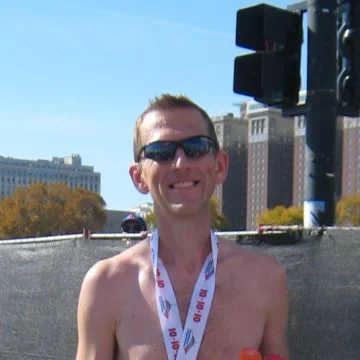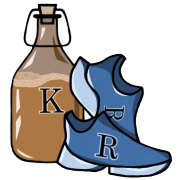Coming off my fastest year yet in 2009, I entered 2010 eager to push my running to an even higher level. I had just finished reading Born to Run, a book that sparked a worldwide interest in barefoot running — and inspired me to embark on one of my own experiments.
Born to Run by Christopher McDougall tells the story of the Tarahumara Indians of Mexico’s Copper Canyons, a tribe renowned for their ability to run hundreds of miles at a time, often in little more than thin sandals. Along the way, McDougall introduces readers to ultramarathon legends like Scott Jurek, and the enigmatic Caballo Blanco, while weaving in research about running form, injury prevention, and the history of humanity as endurance runners. The book made a compelling case for the idea that our bodies are designed for running long distances — barefoot or nearly so.
Fresh off setting PRs in almost every race distance in 2009, I found the concept intriguing. If barefoot running really did encourage a more natural gait and a forefoot strike (acting like a spring instead of hammering the body with each heel strike), maybe it could help me get even faster — and stay injury-free in the process.
Taking the First Steps into Barefoot Running
I decided to dive right in. I had a five-mile loop near my home in Illinois, and one spring day — no snow on the ground — I set off on it completely barefoot. I stayed mostly on the grass, maybe 80% of the run, but about a mile ended up on pavement.
Around mile three, I felt a pebble under my left foot but kept going. When I got home and checked, it turned out I had developed a massive blood blister — about the size of a half dollar — right in the center of my left foot. Not exactly the best start!
Still, I wasn’t ready to give up. I invested in a pair of Vibram FiveFingers — those “toe glove” shoes that were gaining popularity — and eased into barefoot-style running more cautiously, mixing it with regular shoes a couple times a week.
The Results

Despite my efforts, barefoot running didn’t deliver the performance gains I hoped for. In fact, 2010 turned out to be a step back from 2009. Not only did I not set new PRs, but I also developed plantar fasciitis in my left foot — likely triggered by the barefoot training.
When I ran the 2010 Chicago Marathon, my third marathon overall, I managed a 3:25 finish. While I was still proud, it was about 10 minutes slower than the previous year. A hotter race day didn’t help either — I remember race organizers handing out ice-cold towels from kiddie pools to help runners cope with the heat. We all stuck to the shaded side of the streets whenever we could.
Even so, the plantar fasciitis stayed with me well beyond race day, becoming one of those lingering, annoying injuries that flares up most painfully in the mornings.
Lessons Learned from Barefoot Running
I continued to use the Vibrams occasionally for a few more years, but the writing was on the wall. In 2012, I suffered a stress fracture in the third metatarsal of my left foot — likely the cumulative toll of too much minimalist running without enough warning signs from blisters or bruising, since the shoes protected my soles but not the underlying structures.
That’s when I finally retired the Vibrams and fully returned to modern running shoes. As much as I admired the idea of barefoot running, I realized that my body had adapted over decades to today’s cushioned footwear — and asking it to suddenly revert wasn’t realistic for me.
And you know what? That’s okay.
The whole point of My Body Experiment is to challenge myself, to try new things, and not to be afraid of failure. If something isn’t delivering the results you want, it’s better to move on than to stubbornly stick with it. Fail fast, learn, and keep evolving.
Moving Forward
Although 2010 wasn’t a breakthrough year in terms of race times, running remained a steady part of my life. I kept logging about 20 miles per week through the early 2010s, even after the stress fracture, until eventually the marathon bug bit me again in 2016. (More on that in a future post!)
For now, just remember: movement is medicine — and keep moving forward.

Leave a Reply
You must be logged in to post a comment.